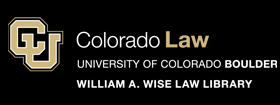Document Type
Article
Publication
Harvard Law Review
Year
1997
Citation Information
Pierre Schlag, Law and Phrenology, 110 Harv. L. Rev. 877 (1997), available at https://scholar.law.colorado.edu/faculty-articles/669.
Abstract
As the intellectual credentials of American law become increasingly dubious, the question arises: how has this discipline been intellectually organized to sustain belief among its academic practitioners? This Commentary explores the nineteenth-century pseudo-science of phrenology as a way of gaining insight into the intellectual organization of American law. Although there are, obviously, significant differences, the parallels are at once striking and edifying. Both phrenology and law emerged as disciplinary knowledges through attempts to cast them in the form of sciences. In both cases, the "sciences" were aesthetically organized around a fundamental ontology of reifications and animisms -- "faculties" in the case of phrenology, "doctrines" and "principles" in the case of law. Both disciplines developed into extremely intricate productions of self-referential complexity. In both cases, the disciplinary edifice was maintained by disciplinary thinkers who sought confirming evidence of the truth (and value) of their enterprise and who went to great lengths to avoid disconfirming evidence. Finally, the surface plausibility of both disciplines was maintained through a tacit reliance on folk beliefs (folk-frames and folk-ontologies) that were recast in professionalized jargons. Both the similarities and the differences between phrenology and law lead to a fundamental question: does the discipline of law know anything, and if so, what?
Copyright Statement
Copyright protected. Use of materials from this collection beyond the exceptions provided for in the Fair Use and Educational Use clauses of the U.S. Copyright Law may violate federal law. Permission to publish or reproduce is required.


